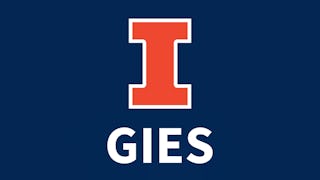This course, developed at the Darden School of Business at the University of Virginia and taught by top-ranked faculty, will teach you the fundamentals of managerial accounting including how to navigate the financial and related information managers need to help them make decisions. You'll learn about cost behavior and cost allocation systems, how to conduct cost-volume-profit analysis, and how to determine if costs and benefits are relevant to your decisions.

Gain next-level skills with Coursera Plus for $199 (regularly $399). Save now.

(843 reviews)
Recommended experience
What you'll learn
Different types of costs and how they are represented graphically
Cost-volume-profit analyses to answer questions around breaking even and generating profit
How to calculate and allocate overhead rates within both traditional and activity-based cost allocation systems
How to distinguish costs and benefits that are relevant from those that are irrelevant for a given management decision
Skills you'll gain
Details to know

Add to your LinkedIn profile
See how employees at top companies are mastering in-demand skills

There are 4 modules in this course
Welcome to the course -- we're glad you're here! During this first week, we'll distinguish managerial from financial accounting, including the financial and related information managers need to help them make decisions. We'll then move on to cost behavior including different types of costs, their classifications, and how these classifications help with decision-making. From there, we'll show how to use a scatterplot and the high-low method to estimate cost functions. Let's get started!
What's included
16 videos2 readings3 assignments
Now that we've learned the fundamentals of cost behavior, we're ready to move on to discussing the relationships between cost structure, volume, price, and profit. We'll then see why these relationships matter as we conduct cost-volume-profit analyses to answer questions around breaking even and generating profit.
What's included
15 videos4 assignments1 peer review
After learning how to conduct cost-volume-profit analyses, we're ready to discuss cost allocation and the different types of systems we can use: traditional and activity-based. From there, we'll learn how to calculate overhead rates and allocate overhead within both types of systems.
What's included
14 videos1 reading3 assignments
In our final week, we'll discuss costs and benefits, and gain an understanding of those that are relevant for a given decision. We'll evaluate the financial impact of a given decision, then determine a reasonable course of action.
What's included
14 videos2 assignments
Instructor

Offered by
Explore more from Finance
 Status: Free Trial
Status: Free TrialUniversity of Illinois Urbana-Champaign
 Status: Free Trial
Status: Free TrialUniversity of Illinois Urbana-Champaign
 Status: Free Trial
Status: Free TrialUniversity of Virginia
 Status: Preview
Status: PreviewPolitecnico di Milano
Why people choose Coursera for their career




Learner reviews
843 reviews
- 5 stars
84.02%
- 4 stars
13.01%
- 3 stars
1.42%
- 2 stars
0.47%
- 1 star
1.06%
Showing 3 of 843
Reviewed on Mar 2, 2020
There were a lot of good example problems that were very beneficial to understanding the concepts, however some of the exam questions were difficult to go back and completely understand.
Reviewed on Aug 29, 2020
Teacher was excellent at taking her time and talking slowly and showing how to work problems. Nothing negative to say. I learned a lot.
Reviewed on Aug 12, 2020
Excellent course, very useful and applicable. Excellent teacher. Some writing errors in the quizzes and exercises, but for everything else, it was excellent. I learned a lot.
Frequently asked questions
To access the course materials, assignments and to earn a Certificate, you will need to purchase the Certificate experience when you enroll in a course. You can try a Free Trial instead, or apply for Financial Aid. The course may offer 'Full Course, No Certificate' instead. This option lets you see all course materials, submit required assessments, and get a final grade. This also means that you will not be able to purchase a Certificate experience.
When you purchase a Certificate you get access to all course materials, including graded assignments. Upon completing the course, your electronic Certificate will be added to your Accomplishments page - from there, you can print your Certificate or add it to your LinkedIn profile.
Yes. In select learning programs, you can apply for financial aid or a scholarship if you can’t afford the enrollment fee. If fin aid or scholarship is available for your learning program selection, you’ll find a link to apply on the description page.
More questions
Financial aid available,
¹ Some assignments in this course are AI-graded. For these assignments, your data will be used in accordance with Coursera's Privacy Notice.





